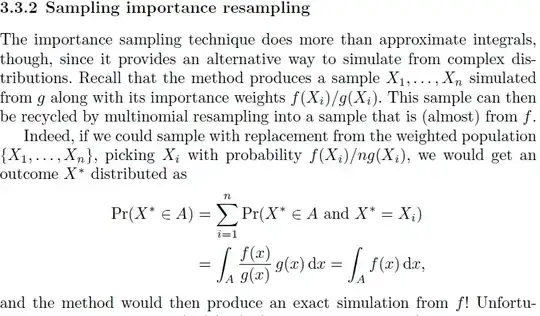Why is it an exact simulation from $f$, and not only an approximation?
I get $\begin{split} P(X^*\in A) & = \sum_i^n P(X^*\in A , X^* = X_i)=\sum_i^n P(X^*\in A | X^* = X_i)P(X^* = X_i) \\ & = \sum_i^n P(X_i\in A)\frac{f(X_i)}{ng(X_i)} \\ & = \sum_i^n 1_{A}(X_i)\frac{f(X_i)}{ng(X_i)} \rightarrow^P E(1_{A}(X))=P(X \in A) \end{split}=$
